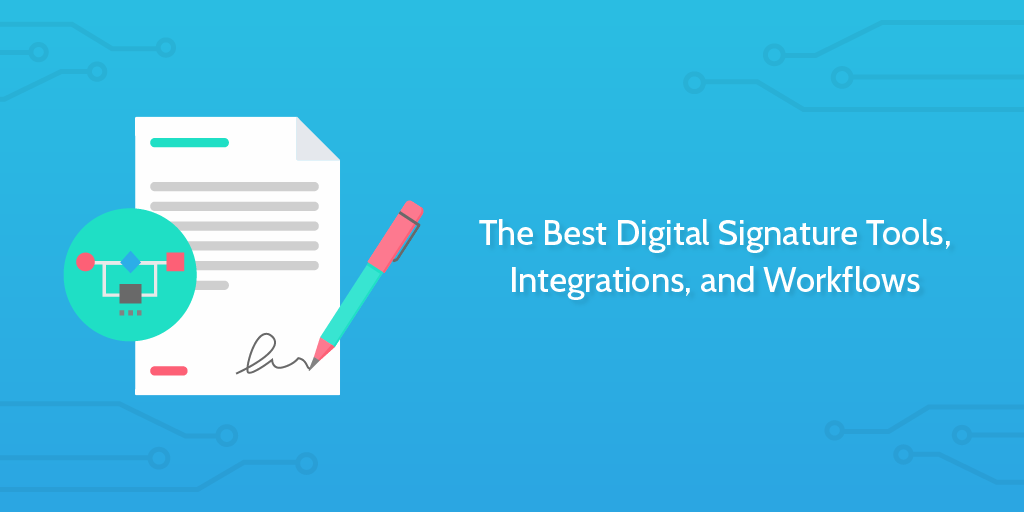 Gone are the days where signing contracts involved figuring out how to connect to a printer, scanner, or photocopier.
Gone are the days where signing contracts involved figuring out how to connect to a printer, scanner, or photocopier.
And don’t get me started on fax machines.
Now we live in a glorious new world of rapid digital signature workflows.
There are many kinds of digital signatures. Some may think of the high-tech encrypted keys people like Julian Assange have used to prove whether messages came from them or not.
But let’s be honest, outside of our international secret agent daydreaming we’re not likely to need to use those. What we need is the simple act of being able to add our signature on to digital documents with the fewest number of clicks possible.
Those interested in soccer may remember the high profile signing of David de Gea by Spanish giant Real Madrid from Manchester United. Or, actually, you won’t remember it. Because it didn’t happen. The documents were to be sent in the last moments of the transfer window, and the whole multi-multi-million dollar deal fell through due to a broken fax machine.
Digital solutions to contract workflows are important.
That’s why in this Process Street article we’re going to look at:
- The 5 best digital signature tools
- Digital signature integrations you can use today
- How to connect digital signatures with the workflows in your business
The 5 best digital signature tools
- HelloSign
- DocuSign
- DocVerify
- PandaDoc
- Eversign
HelloSign
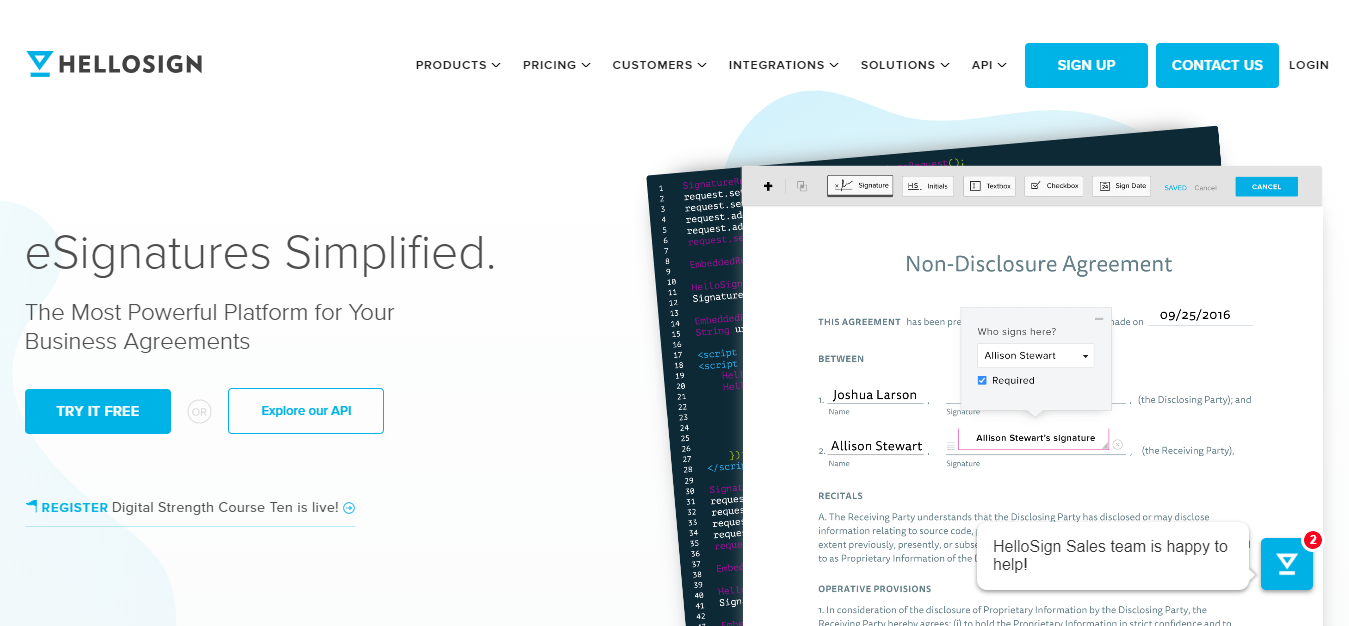
I’ve used a host of these tools over the past few years, but the first one I came in contact with was HelloSign which I first used when drawing up agreements with clients when I worked in software development.
I guess, for this reason, it will always have a fairly special place in my heart. Mainly because I didn’t understand how to use the scanner and it was embarrassing to admit that every time we had a new client.
HelloSign is one of the more popular tools in this space and does all the key things as well as you could ask.
The design is simple and intuitive while also being incredibly mobile friendly.
The HelloSign platform is split into 3 main products. First, you have HelloWorks which is their online product. This allows you to create and manage documents, sign other people’s documents, and have other people sign yours.
The other two products are the API so that you can build a deep connection with HelloSign directly into your app or workflow, and the HelloFax which gives you the ability to send and receive faxes online. This is an underrated feature, but it means you don’t have to get sucked down by the outdated methods used by the other organizations you have to work with.
HelloSign integrates natively with a broad range of apps including G-Suite, HubSpot, Salesforce, Oracle, Slack, and more. It also integrates with the third-party automation provider Zapier, expanding your options to integrating with over 1,000 other apps and webapps.
HelloSign is free for up to 3 documents per month for 1 sender, $13 per month for unlimited documents for 1 sender, and business packages for teams start at $40 per month.
The API package is more expensive and starts at $99 per month and hits $449 p/m before you reach the enterprise plans. The fax option has a free tier and pricing starts at $9.99 p/m.
DocuSign
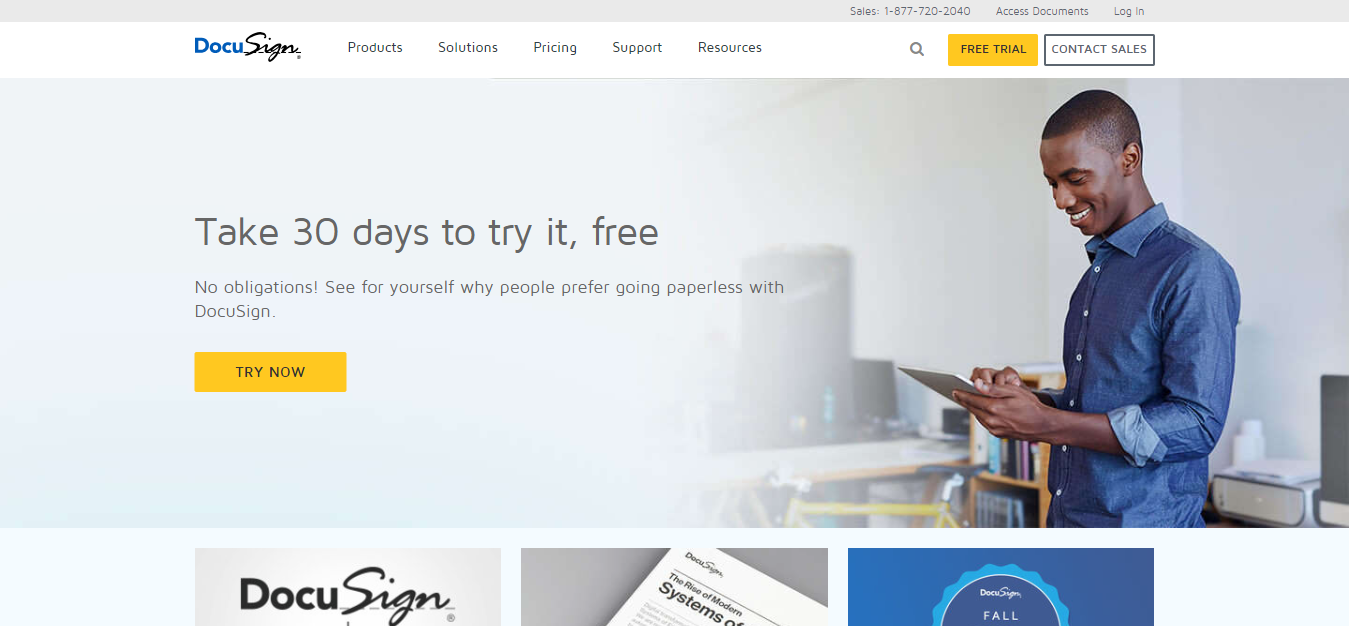
DocuSign are another player in the digital signature game. And a pretty big player at that.
DocuSign claims to have over 200 million users and a 2016 report from Forrester Research describes it as:
[T]he strongest brand and market share leader…
This highly regarded position in the industry partly comes down to being one of the first companies to have a smooth engaging design behind their product. It certainly can’t be described as a clunky tool!
Not only does DocuSign function exactly the way you would want it to on desktop, it is also very mobile friendly.
While questions will arise about which of these products is the most user friendly, the reality is that the market has matured to the point where all products offer a solid service. Where DocuSign may excel might be within the larger more corporate offerings.
It should be noted that this corporate lean has positives and negatives. While DocuSign has a powerful API for you to play with, it does not have the simple clickable integration potential provided by competitors which can integrate with Zapier. This limits some of the benefits for startups or SME use.
Unlike HelloSign, DocuSign doesn’t really have a free pricing level. The first pricing band is $10 p/m and this lets you send out 5 documents to be signed.
The Business Pro package is $40 p/m, and anything above that falls into the enterprise suite. That’s where things like the API start to get involved.
If you want to have more than one user, you need to ring them to chat it through. All this is very much what you would expect from an enterprise oriented company.
DocVerify
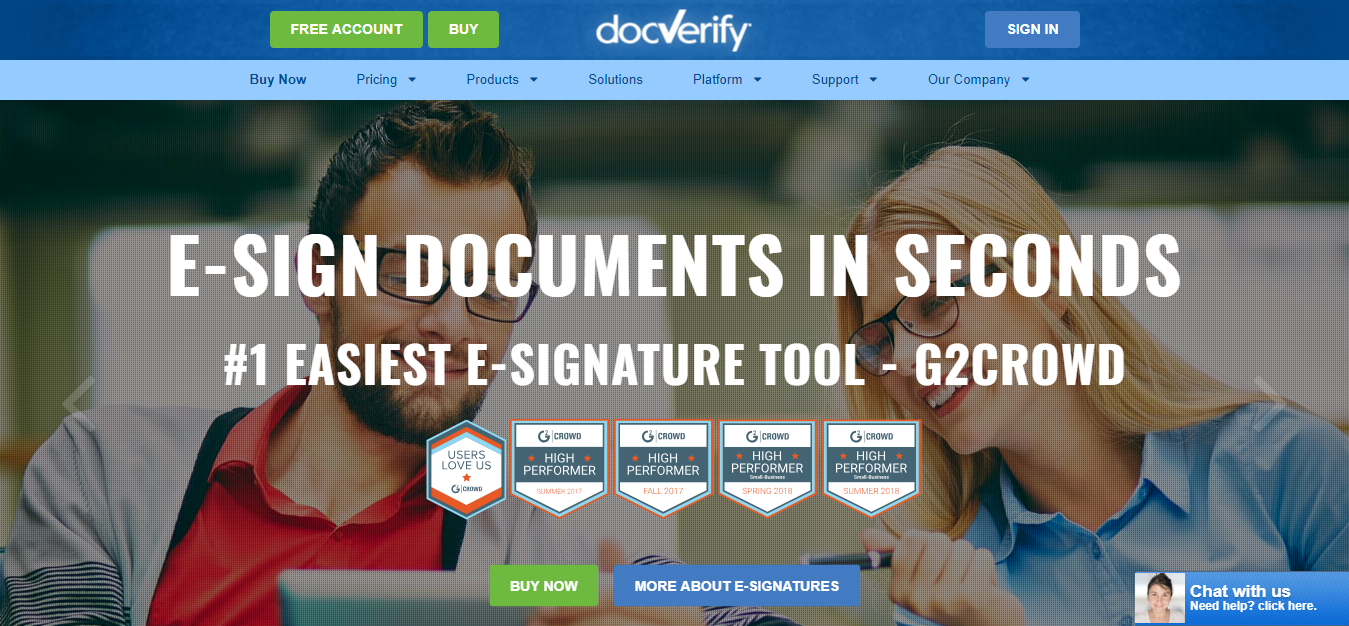
This next one is a bit different from the previous two.
DocVerify is a more simple digital signature tool than either of the above, yet it does this core service very well and at an affordable price.
It isn’t as swish as the others and there’s a fair argument to say that the design isn’t quite as appealing. But it is still very easy to use for this core service.
What’s interesting about DocVerify beyond digital signatures is that you can contact notaries through the platform so they can notarize documents for you straight away. This is kind of a cool feature and I like it.
What I like most about DocVerify, however, is its pricing.
Plans start at $10 a month – there is a free trial if you want to check it out – and the basic plan offers much more than the other competitors previously mentioned, including the number of documents which can be signed and the added features inclusive to that plan.
If you’re someone who wants to be using a platform like this on a regular basis during the month, but you’re a solopreneur or a startup then DocVerify offers you great value for your money.
The premium plans top out at $40 a month before we reach the custom pricing level. As we get to the top of the pricing, you’ll find features like Salesforce integrations, API access, and other useful add ons.
My one gripe with DocVerify is that it doesn’t offer a Zapier integration. If you’re reading, DocVerify, please consider adding that to your feature set.
PandaDoc
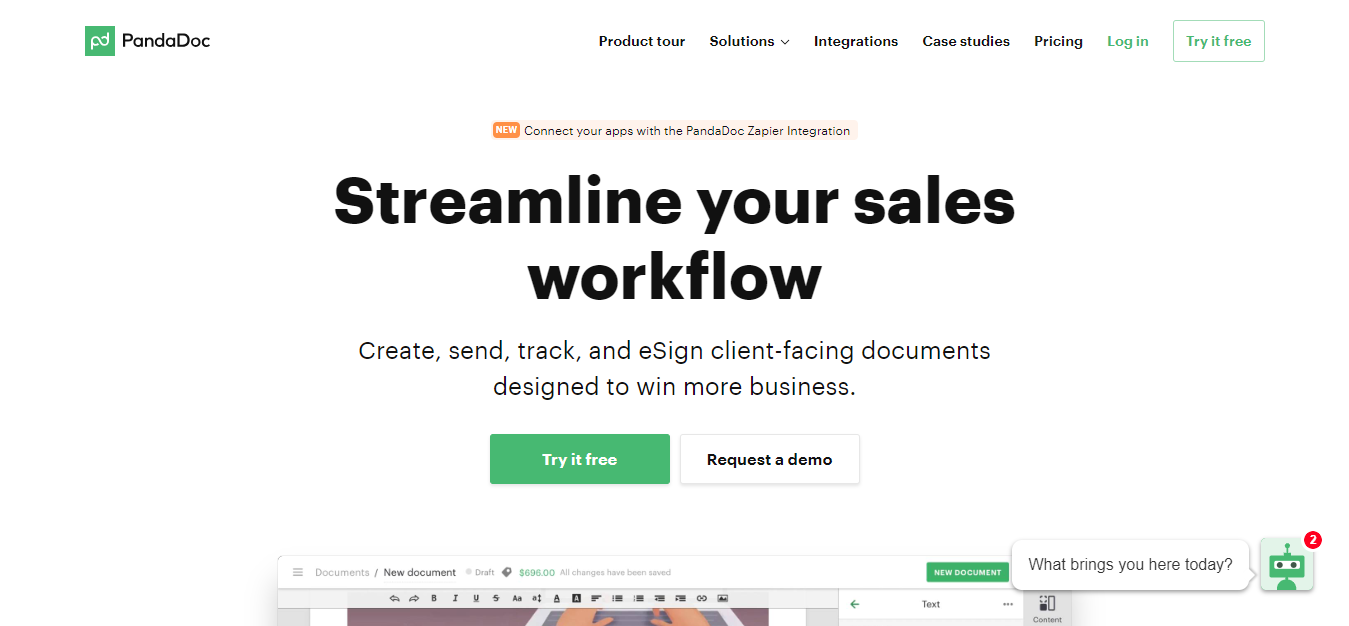
Much like DocVerify has looked to aim for the notary niche, PandaDoc has taken its own perspective on how it can enter the industry.
PandaDoc has hit success in the past few years after its series A round in 2015, following that up with series B in 2017 with HubSpot and MicrosoftVentures getting involved.
What PandaDoc specialize in is the sales-oriented aspect of digital signatures. Well, the company’s real focus is as a document management system with a digital signature component to smooth the approval workflow in the sales process.
But considering one of the key use cases for digital signatures is in sales, it feels very worth mentioning them.
The platform’s document builder tool is very intuitive and allows for collaboration. The document is then tracked when sent to the client so that you can gain deeper understanding of how the process is going. PandaDoc have essentially taken sales metrics and traditional sales SaaS tools and applied their structure to the idea of sending PDF proposals.
It’s clean and easy to use, with a large number of native integrations and a new Zapier integration to play with too.
Pricing starts at $15 per user per month for the individual plan and $49 for the business plan. What you’re really paying for is a document management system – the digital signature functionality comes built into the platform at no cost with up to 50 documents per year you can send out on the individual plan.
Eversign
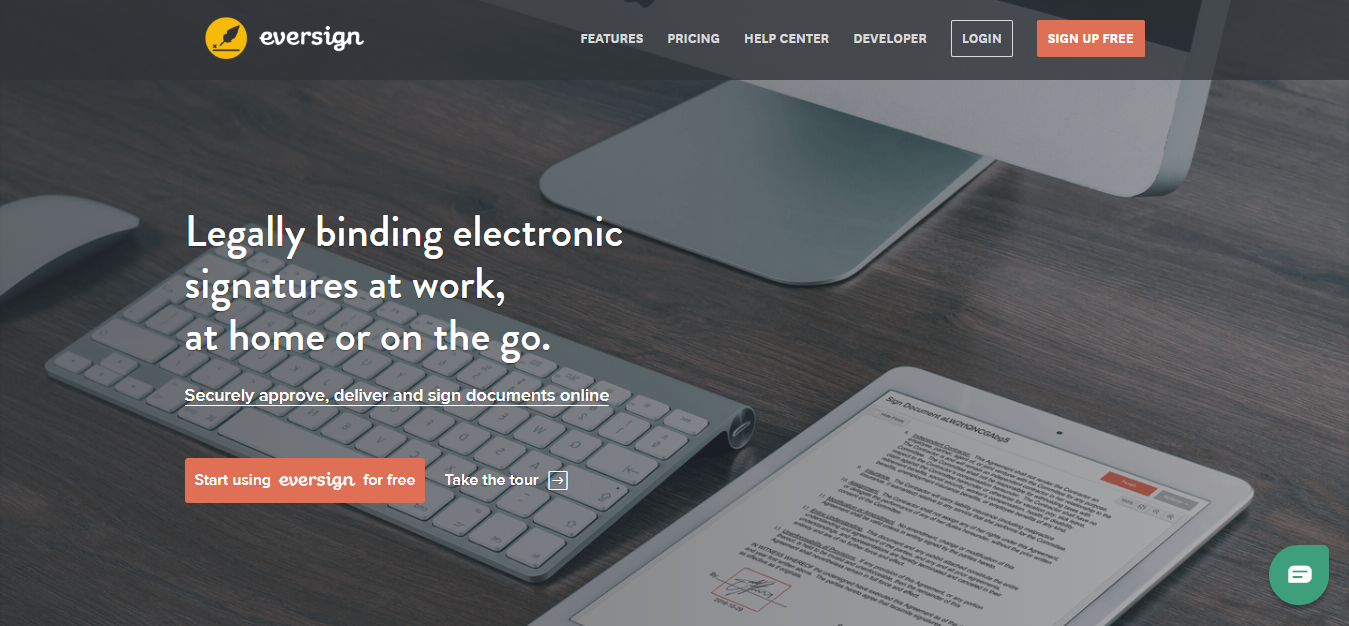
Many of you, dear readers, will have clicked on this article looking for different things.
You all have varying use cases and probably cover a range of experience in regards to having used these kinds of software before.
But, at the core of it, you’re probably all looking for a platform where you can upload a document and send it to someone else to sign. You’d like to do it at a reasonable price too.
Well, my personal favorite tool for performing that core function is Eversign.
The design is lovely; smooth, intuitive, and fast.
It integrates with many of the tools you already use, like Evernote, Google Docs, and Dropbox. It does not have a Zapier integration, sadly. Again, like with DocVerify, I’d like to ask the team to consider adding that.
What it does have going for it on top of all of this, is very competitive pricing.
There is a free pricing tier which gives you the same features other platforms charge you $10/15 a month for; send 5 documents out a month, plus you get to play around a little bit with the API – even on the free tier!
The paid tier starts at $7.99 p/m if paid annually and gives you unlimited documents you can send out, plus the use of 3 templates, and the integrations.
The plans go up in pricing to add more teammates and more templates, plus in person signing.
If you’re an individual, a startup, or an SME, Eversign are a really good option to check out. Perhaps the best value on the market for an individual.
When it comes to large corporate plans, DocuSign might have an edge. When it comes to sales-based document workflows, PandaDoc are killing it. When it comes to getting something notarized, DocVerify are on top of it.
But the very core product excels in both Eversign and HelloSign, with Eversign on the slightly cheaper price-point but HelloSign having the breadth of features and best-in-class integration potential.
Digital signature integrations you can use today
Out of the various tools in our list, all of them featured integrations of some form.
However, only two of them utilized the third party automation service Zapier – a tool we’re really big fans of.
With Zapier, you can connect up over 1,000 different apps and webapps to make handy automations. These automations, or zaps, can massively reduce the amount of time you spend on data entry and boost your productivity.
Plus, when utilized as part of a structured business process automation flow, they can improve your work patterns.
We thought we’d pull out a number of useful integrations which reflect the varied capabilities you’ll find in bringing automation into your workplace practices.
You can tie these automations together to create multi-step flows if you want to, leading to whole processes being automated. And best of all, you don’t need to be able to code in order to get started.
Perhaps you want to request signed consent after someone has filled in your form? Important best practice step for building trust around sensitive data requests.
Or maybe you want to keep a separate backup log of all the people you’ve reached out to for signatures? Maybe you want to build more automations off this list?
What if you want to change the status of a user, client, or customer within your CRM once they’ve agreed to a sale?
Maybe you’re like us and you mainly use Slack as your work-hours communication tool?
You could be running your sales team through HubSpot and need to keep your information up to date at all times.
If you’re completing a sale, it doesn’t make any sense to create obstacles for the customer. Once they’ve signed and agreed, shoot them that invoice!
We all have a central storage space of some description for our businesses. Make sure you keep copies of your important documents stored securely in the cloud.
The options are endless.
Well, almost endless. There are a lot of options and a lot of different ways you can configure your tools to work together.
Automating simple tasks is just one of the ways you can boost efficiency and standardization in your company. Another might be to adhere to the principles of business process management…
How to connect digital signatures with the workflows in your business
At Process Street, unsurprisingly, we’re passionate about processes.
Processes help you do your work consistently, help you avoid distractions, and help you create systems which you can optimize and hopefully delegate.
With Process Street you do this by creating a template for a process and running it as a checklist each time you undertake the process.
The template acts as the documented process model and the checklist acts as a record of each process instance.
Within the template there are form fields where you can enter data. This data is gathered as you work through the process, and can include single lines, drop-down fields, dates, paragraph fields, and a host more.
What you can do with Zapier, is connect different steps of this process to different external tools; automating tasks which spin off the process. You can pull data from some of the form fields in the checklist and shoot it to another platform.
You could connect your process template to a sales CRM – as we did here with Close.io – and then transfer all of the information gained on a sales qualification call straight to the CRM. Then you could kick off with a client onboarding checklist and integrate digital signatures into that.
Or, you could take a step from this Landlord Screening Checklist below and use it to trigger an agreement to be sent to the landlord in question. You could pull the email from the first task and then trigger the sending of the agreement at the end.
You could change task number 24 to Send the agreement and have it automatically shoot a populated agreement directly to the landlord at the moment you need to send it, rather than having to prepare an agreement and faff around with different tools.
This kind of set up makes your company more efficient and enforces standards.
Just take a look at our client A-Team Lending, which was able to combine Process Street with digital signature tools to automate employee onboarding processes.
The important information was entered into Process Street, automatically sent to WebMerge to create the agreement, then sent to the new employee for their digital signature. It works like a charm and hardly involves staff intervention.
By teaming BPM software like Process Street with automation tools like Zapier and the digital signature tools above, you can create order in your operations and focus on getting on with the human side of business.
Have you used digital signature tools before? Which have been your favorites? Let us know in the comments below!







 Workflows
Workflows Projects
Projects Data Sets
Data Sets Forms
Forms Pages
Pages Automations
Automations Analytics
Analytics Apps
Apps Integrations
Integrations
 Property management
Property management
 Human resources
Human resources
 Customer management
Customer management
 Information technology
Information technology



Adam Henshall
I manage the content for Process Street and dabble in other projects inc language exchange app Idyoma on the side. Living in Sevilla in the south of Spain, my current hobby is learning Spanish! @adam_h_h on Twitter. Subscribe to my email newsletter here on Substack: Trust The Process. Or come join the conversation on Reddit at r/ProcessManagement.